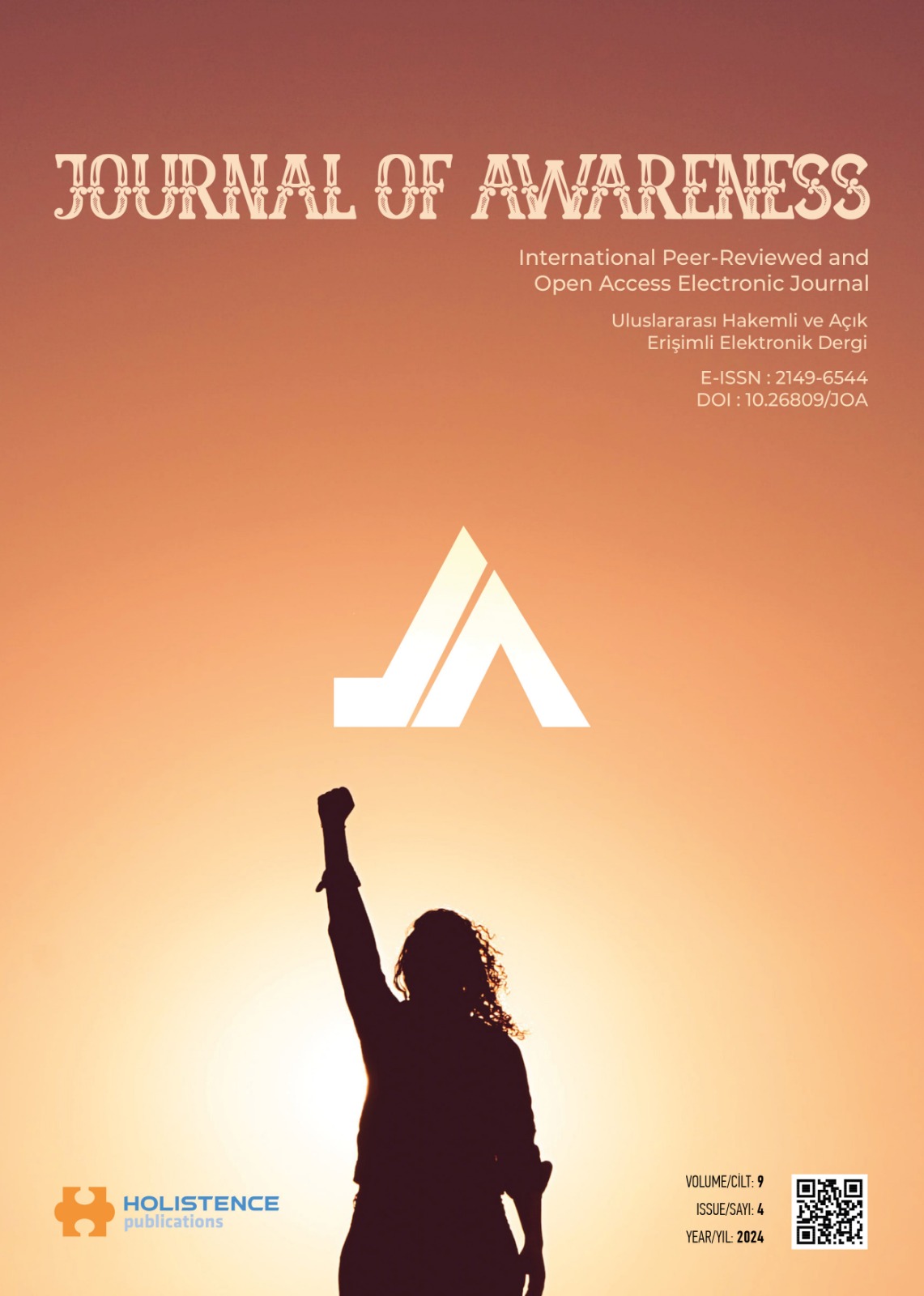Jung and his teachings on the subconscious
DOI:
https://doi.org/10.26809/joa.2480Keywords:
Subconscious, Ego, Self, Psychological DevelopmentAbstract
Although it is possible to see similarities between the psychoanalytic theory of Swiss psychologist Carl Gustav Jung and Freud's theory of psychoanalysis, psychoanalytic theory differs from Freud's theory in terms of explaining the subconscious.
It is known that Jung was a student of Freud in the early years of his studies and that they worked closely together for a while. Their disagreements and parting of ways were about the subconscious. Jung wrote about this in "The Psychology of the Subconscious" (Jung, 2001) and opposed Freud's pansexuality.
Contrary to Freud's pansexual position, Jung argued that the subconscious had a greater content than "repressed sexual and aggressive tendencies". Jung stated that in addition to eros, there was divinity and a common aspect of all people in the subconscious, and he called this "creative life energy".
Jung, who did not accept that the subconscious was specific to the person, put forward an idea about the collective subconscious that existed deeper in the structure of the personality. Jung showed that the collective unconscious is the most powerful and effective psychic system and that in pathological cases it includes the ego and the personal unconscious. Jung believed that the collective unconscious was composed of archetypes, which are primitive mental images. An archetype is a universal form of thought that has an important emotional element. Archetypes are innate ideas and impressions. The self archetype is more important in Jung's theory. This archetype unites the elements in its environment and forms the essence of the personality. When the soul is fully integrated, the person feels unity, wholeness and harmony. According to Jung, the self is the main purpose of human life. The purpose of this article is to examine K. G. Jung's views on the subconscious and the most important of the archetypes he brought to science, the self archetype (self – Eng.), and to show its place and role in mental development.
Downloads
References
ANDREW, R.F., (2002) "Psychology and Religion: Eight Points of View", 2002, p. 111.
ANİELA, J. (1963). Foreword to Memories, Dreams, Reflections". Vintage Books, ISBN: 9780679723950
BROME, V. (1978). Jung:Man and Myth. House of Stratus, ISBN: 978-1842320334
CALİAN, G. F. (2010). Alkimia Operativa and Alkimia Speculativa. Some Modern Controversies on the Historiography of Alchemy. Budapest: Annual of Medieval Studies at CEU. pp. 167–168.
CASEMENT A. (2001). Carl Gustav Jung. SAGE Publications Ltd, pp. 1–38, ISBN: 978-0-7619-6238-0
CROWLEY, V. (2000). Jung: A Journey of Transformation: Exploring His Life and Experiencing His Ideas. Wheaton Illinois: Quest Books, ISBN: 978-0-8356-0782-7.
DEİRDRE B. (2003). Jung: A Biography. New York: Back Bay Books. pp. 7, 53. ISBN: 978-0-316-15938-8.
DUNNE, C. (2002). Carl Jung: Wounded Healer of the Soul: An Illustrated Biography. Continuum International Publishing Group. p. 3, ISBN: 978-0-8264-6307-4
GERHARD (1987). Jung: a Biography. Moshupa, Dorset: Shambhala. p. 9. ISBN: 978-0-87773-455-0.
HAYMAN, R. (2001). A Life of Jung (1st American ed.). New York: W.W. Norton & Co. ISBN: 978-0-393-01967-4
JUNG, C.G. (1956; 1967). Symbols of Transformation, Collected Works 5. Princeton, NJ: Princeton University Press. ISBN: 0-691-01815-4
JUNG, C.G. (1959). The Archetypes and the Collective Unconscious, Collected Works, Volume 9, Part 1. Princeton University Press. para. 90-92,118. ISBN: 978-0-691-01833-1
JUNG, C.G. (1970). Mysterium Coniunctionis: An Inquiry into the Separation and Synthesis of Psychic Opposites in Alchemy, Princeton University Press, pp. 212, ISBN: 0-691-01816-2
JUNG, C.G. (1971). Psychological Types. Princeton University Press, pp. 136–147.
JUNG, C.G. (1977). Symbols of Transformation. Princeton University Press, 2nd edition, ISBN: 0691018154
JUNG, C.G. (1979). Aion: Researches into the Phenomenology of the Self. Çeviren: R. F. C. Hull. Princeton University Press, 2nd edition, ISBN: O-69I-O9759-3
JUNG, C.G. (1995). Modernity and the Making of a Psychology. University of Chicago Press, ISBN: 521-53909-9
JUNG, C.G. (2001). Psychology of the Unconscious: Study of the Transformation and Symbolisms of the Libido, 476 pp. Princeton University Press, ISBN: 9780691090252
JUNG, C.G. (2010). Synchronicity: An Acausal Connecting Principle. Princeton University Press, ISBN: 0691150508
JUNG, C.G. (2013). Memories, Dreams, Reflections, İmportant Books Press, ISBN: 9780679723950
JUNG. C.G. (2022). Psychological Types (Collected Works of C.G.Jung), Routledge, 1st edition, ISBN: 0367708698
LANCE S. O. (2010). The Hermeneutics of Vision: C. G. Jung and Liber Novus. The Gnostic: A Journal of Gnosticism, pp. 23–46, Western Esotericism and Spirituality.
SİGMUND, F (1949). The Ego and the Id. The Hogarth Press Ltd, London.
Downloads
Published
How to Cite
Issue
Section
License
Copyright (c) 2024 Holistence Publications

This work is licensed under a Creative Commons Attribution 4.0 International License.
When the article is accepted for publication in the Journal of Awareness, authors transfer all copyright in the article to the Rating Academy Ar-Ge Yazılım Yayıncılık Eğitim Danışmanlık ve Organizasyon Ticaret Ltd. Şti.The authors reserve all proprietary right other than copyright, such as patent rights.
Everyone who is listed as an author in this article should have made a substantial, direct, intellectual contribution to the work and should take public responsibility for it.
This paper contains works that have not previously published or not under consideration for publication in other journals.










